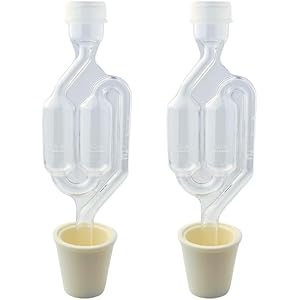Understanding Natural Yeast Sources
Natural yeast is a vital component in various fermentation processes, including baking and brewing. It is essential to understand where to find yeast naturally to harness its benefits effectively. Yeast can be found in various environments, and knowing these sources can help you utilize it in your culinary and brewing endeavors.
Wild Yeast in the Environment
Wild yeast is present in the environment, particularly in areas with abundant organic matter. This includes fruits, grains, and even the air around us. For instance, grapes and apples have natural yeast on their skins, which can be harnessed for fermentation. By collecting these fruits and allowing them to ferment, you can capture the wild yeast present.
Fermentation from Homemade Bread
If you are wondering where can I get yeast naturally, consider making your own sourdough starter. A sourdough starter is created by mixing flour and water and allowing it to sit at room temperature. Over time, wild yeast from the environment will colonize the mixture, creating a natural leavening agent for your bread. This method not only provides yeast but also enhances the flavor of your baked goods.
Utilizing Local Grains
Local grains can also be a source of natural yeast. When grains are harvested, they often carry wild yeast on their surfaces. By soaking these grains in water and allowing them to ferment, you can cultivate yeast that can be used for baking or brewing. This method connects you to local agriculture and promotes sustainability.
Collecting Yeast from Beer and Wine
Another effective way to obtain natural yeast is by collecting it from the fermentation of beer or wine. When brewing at home, you can save the sediment from the bottom of your fermentation vessel, which contains yeast. This yeast can be reused in future batches, making it a sustainable option for home brewers.
Get more content like this!
Sign up to receive updates and new terms first hand.
Exploring Natural Fermentation Techniques
Natural fermentation techniques, such as lacto-fermentation, can also yield yeast. Foods like sauerkraut and kimchi rely on the natural yeast and bacteria present in the ingredients. By allowing these foods to ferment, you can create a rich environment for yeast growth, which can be beneficial for various culinary applications.
Using Honey and Fruit Juices
Honey and fruit juices are excellent sources of natural yeast. When honey is diluted with water and left to sit, wild yeast from the environment can begin to ferment it, creating a mead-like beverage. Similarly, fruit juices can be fermented by adding a small amount of sugar and allowing them to sit, capturing the natural yeast present in the fruit.
Exploring the Role of Airborne Yeast
Airborne yeast is another source that can be tapped into. Yeast spores are present in the air, and they can settle on various surfaces, including food. By exposing a mixture of flour and water to the air, you can allow airborne yeast to colonize it, creating a natural starter for baking. This method emphasizes the importance of the environment in yeast cultivation.
Harvesting Yeast from Natural Sources
Harvesting yeast from natural sources requires patience and observation. By monitoring the fermentation process of various foods and beverages, you can identify when yeast is present. This hands-on approach not only provides you with yeast but also deepens your understanding of fermentation and its role in food production.
Conclusion: Embracing Natural Yeast Sources
Embracing natural yeast sources opens up a world of possibilities in baking and brewing. By exploring the various methods of obtaining yeast, you can enhance your culinary skills while promoting sustainability. Whether through wild yeast from fruits, homemade starters, or local grains, the journey to find natural yeast is both rewarding and educational.




